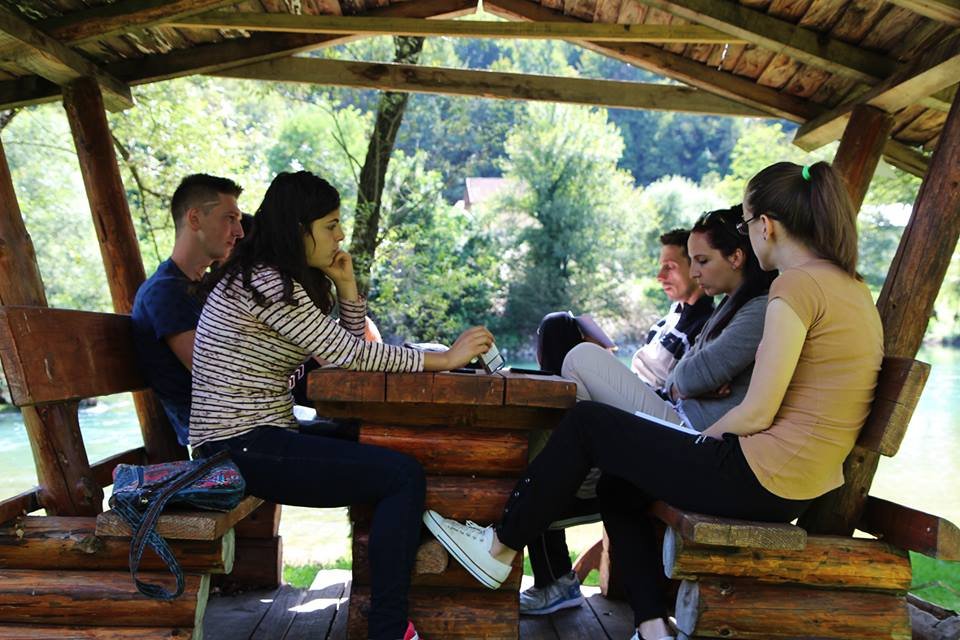Human Rights Column: Building Peace in Bosnia and Herzegovina
Twenty-seven years after the Dayton Peace Accords ended the bloody war in Bosnia and Herzegovina, ethnic tensions in the region have been etched into law. The Center of Peacebuilding builds bridges through interethnic dialogue.
Our way is peace. The motto of the Center for Peacebuilding that we founded in Sanski Most (Bosnia and Herzegovina) 18 years ago, is more than that: It is also how we aspire to live, work, and treat others. It is at the heart of everything we do. And it fuels our hope for the people of our country and the world.
When we founded the Center in 2004, our objective was to help communities and people, especially youth, overcome divisions, heal, and reconcile. As the former Yugoslavia broke apart in the early 1990s, Bosnia, the most ethnically diverse republic, initiated plans for independence but dissolved into a bloody civil war among the three main ethnic groups: Bosniaks, Croats, and Serbs. The conflict, which claimed around 100,000 lives, ended with the signing of the Dayton Peace Accords in 1995, but not before its people experienced some of the most grievous atrocities the world had witnessed in Europe since World War II.
While the Peace Accord helped end the violence, it also etched ethnic tensions into law. Since then, Bosnia has found itself torn between conflict and peace. As the prospect of reconciliation among the country’s 3.2 million people remains elusive, the ethnic tensions from the war in the 1990s remain and, in some ways, have become institutionalized.
The Center for Peacebuilding was founded by survivors of ethnic cleansing who wanted to help the local community, Sanski Most, in north-western Bosnia, heal from the conflict and ensure that ethnic cleansing and genocide never happened again. Since the Center’s founding, we have seen the impact of our work expand. What started as a localized effort has grown to include many international connections. While the primary focus of our program is still local, we have developed partnerships and programs both near and far. These efforts are made possible with the help of friends and donors through the Global Giving platform. Over the years, we have found ourselves connected to people who, like us, wish to live in a world that is rooted in peace, who yearn for stability and sustainability in their communities, who would rather spend their time sowing seeds of unity and dignity than spreading hate. We now work with more youth from a broader range of communities. This means that we are cultivating connections. People outside our community come to know us, and, in turn, people in our community grow to know others. These opportunities create more relationships that line the path to peace.
Our Garden of Opportunities in Sanski Most embodies our mission. Over the years, we have made it our organization’s centerpiece. Like a farmer who is deeply connected to the earth and tends his or her land season after season and year after year, we have made great efforts to cultivate our organization, facilities, and programs. Our Center is environmentally conscious and engages in sustainable efforts with self-sustainability as our goal. We envision a better-equipped place to host the programs we already offer and accommodate programs we hope to provide.
The Peace Camp—a week-long retreat that brings together individuals from different ethnic backgrounds, especially youth—is one of our most exciting programs. With the help of peacebuilders, participants meet and discuss challenging topics related to the conflict in Bosnia and Herzegovina. Participants have the rare opportunity to meet with other youth, often from different ethnic communities, to discuss the history of the war and ethnically based prejudice in Bosnia and Herzegovina (BiH). Key components of the peace camp structure include helping participants learn skills in non-violent communication, active listening, prejudice reduction, and mediation. For many participants, the peace camp represents a rare opportunity to interact with individuals from different communities and engage in necessary dialogue.
Moreover, the participants can engage in these critical activities and efforts in a safe and peaceful environment. Building trust is the foundation of the peace camp; and administrators trained in nonviolent communication act as facilitators and guides. These camps have been beneficial in the past, but actual progress requires sustained effort. A significant outcome of the peace camps is to inspire and train participants to become peacebuilders themselves and return to their communities with an increased capacity to help those around them grow from post-war divisions.
We also use the land for our International Peace Week programming, which coincides with the United Nations International Day of Peace and features speakers, participants, and workshops from local and international backgrounds. By including international visitors to the peace week, we are cultivating more awareness in our community. Our visitors are harvesting and taking the lessons they learn with us in Sanski Most. It is incredible to see so much growth and potential in our corner of the world.
We can connect with the earth by bringing young people from Bosnia and Herzegovina together in the garden. We can help the next generation root themselves in peace. We can till the seedbed of the next generation by helping them develop critical and creative thinking skills, allowing young people to see past misinformation, recognize corruption, and reconcile with other youth who also want to find a way rooted in peace.
Vahidin Omanović and Mevludin Rahmanović are the co-founding directors of the Center for Peacebuilding in Sanski Most. John Sturtz, an Associate Professor of Holocaust and Genocide Studies at Keene State College, serves as international advisor to the Center.














